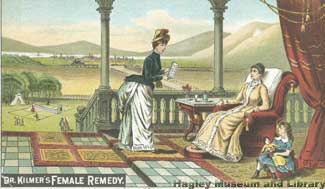
Dr. Kilmer's Female Remedy, circa 1895
Dr. Kilmer's Female Remedy addressed numerous female complaints. This trade card suggested that mothers give the remedy to their "weak and delicate daughters."
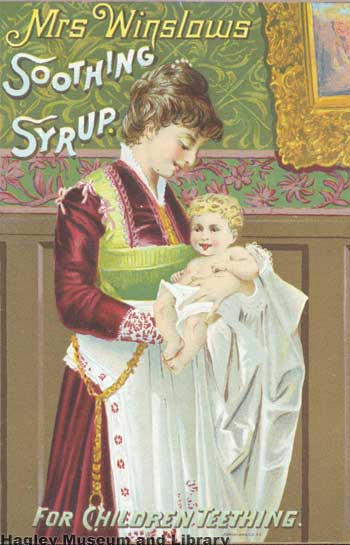
Mrs. Winslow's Soothing Syrup, 1888
Mrs. Winslow's Soothing Syrup was marketed as an indispensable aid to mothers, to help soothe babies' pain and discomfort while teething. The company used various media to promote their product. Containing one grain (65 mg.) of morphine per fluid ounce, it effectively quieted restless infants and small children. Sadly, many of these "soothing syrups" became known as "baby killers" due to the instances of infant death caused by these medicines.
Curtis & Perkins, proprietors
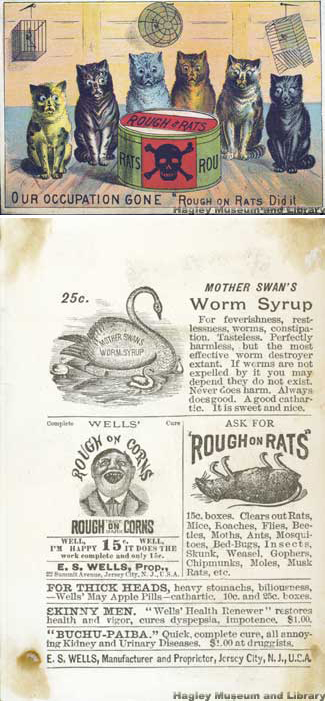
Rough on Rats, circa 1885
E.S. Wells manufactured a strange combination of products: medicines for the general public, as well as rat poison. Wells claimed that their Worm Syrup treated feverishness (in humans, not in rats), restlessness, and constipation, and would expel worms from the body. It was described on the trade card as "sweet and nice." Wells also manufactured a remedy for corns called "Rough on Corns." This trade card focuses on "Rough on Rats" poison, which was claimed to rid your house of rats, mice, roaches, flies, beetles, moths, ants, skunks, weasels, gophers, moles and muskrats.
E.S. Wells, Manufacturer & Proprietor, Jersey City, New Jersey
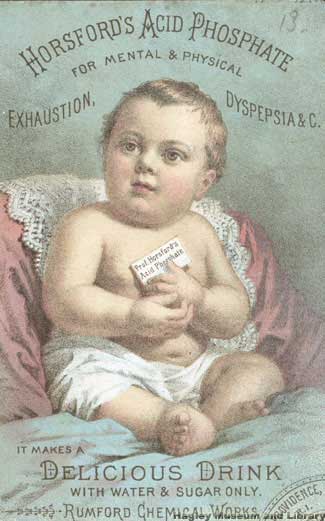
Horsford's Acid Phosphate, circa 1885
Prepared according to the directions of Prof. E. N. Horsford, of Cambridge, Massachusetts, this concoction was suggested for dyspepsia, indigestion, headache, mental and physical exhaustion, nervousness, hysteria, night sweats, consumption, and other ailments. According to their advertising: "This Acid Phosphate…imparts new energy to the system, giving the feeling and sense of increased intellectual and physical power." The use of the baby on the front of the card helped reinforce the "gentleness" of the compound.
Rumford Chemical Works, Providence, Rhode Island
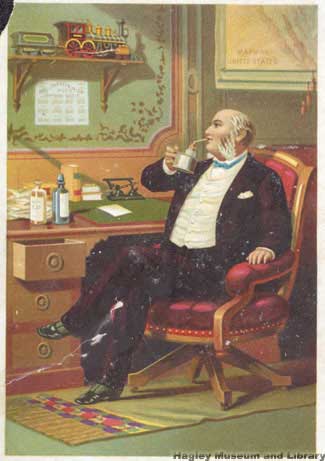
Compound Oxygen, circa 1880
Quack treatment for respiratory ailments were common during the late 1800s. Dr. Starkey teamed up with another physician and created this popular concoction, claiming that it was not a drug but a "scientific" adjustment to oxygen and nitrogen. Indications for Compound Oxygen included consumption, asthma, bronchitis, dyspepsia (indigestion), catarrh, hay fever, headache, debility, rheumatism, and neuralgia
Drs. Starkey & Palen, Philadelphia, Pennsylvania
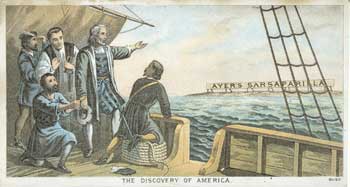
Ayer's Sarsaparilla, circa 1880
The back of this advertising card claimed: "Without doubt the discovery of America is Ayer’s Sarsaparilla...This is a compound concentrated extract composed of the Sarsaparilla-root of the tropics, Stillingia, Yellow Dock, Mandrake, and other roots held in high repute for their alterative, diuretic, tonic, and curative properties. An economical and reliable blood-purifying medicine."
In fact, this remedy was nothing more than a simple beverage of sweetened, herb-flavored water. It was dispensed as a "tonic" (still the general term for soda pop in certain areas of the country) but it was little different from the drink we now call root beer.
Dr. J.C. Ayer & Co., Lowell, Massachusetts
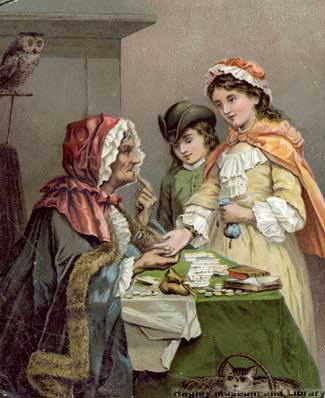
Dr. Jayne's Tonic Vermifuge and Dr. Jayne's Sanative Pills, circa 1880
Few patent medicine companies were as successful and long-lived as the line of Dr. Jayne’s Family Medicines. Dr. David Jayne is credited with being one of the first manufacturers to use the almanac as a promotional device. Between 1843, the year he printed his first almanac, and 1930, the Jayne Company distributed over 500 million almanacs.
Jayne used intricate and well-crafted graphics to promote his products to potential customers, at least some of whom were illiterate. Jayne’s ads, with their finely engraved images, left a more vivid mark on the memory of the casual observer than a dozen pages of print. He spared no expense and commissioned detailed engravings on copper plate, partly to appeal to his customers’ sense of aesthetics, and partly to prevent counterfeiting.
Dr. D. Jayne & Sons, Philadelphia, Pennsylvania
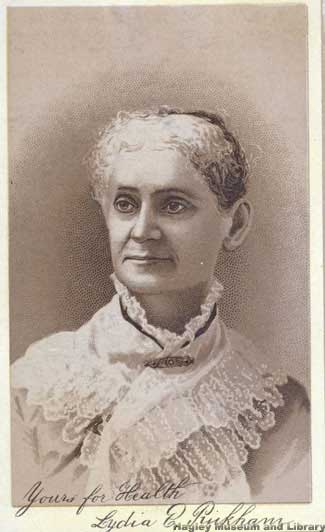
Lydia E. Pinkham's Vegetable Compound, 1888
Lydia Pinkham’s Compound was the mother of all patent medicines. Her Vegetable Compound might be the most popular patent medicine of all time. It is still sold today, although in a much modified form. This concoction promised to be a savior for all women who experienced "female problems." Pinkham claimed that it could cure moodiness, as well as dissolve and expel tumors.
The advertisements suggested that men loved this compound, because it made women "so much easier to live with." One advertisement exclaimed "Don’t blame her! She cannot help it." Lydia's famous face appeared on many of her advertisements and trade cards, and she became synonymous with relief of monthly female illnesses. In the long run, the medicine paved the way for a deeper understanding of women's hormonal fluctuations.
Images: Helen Cushman Trade Card Collection. For permission to reproduce or publish images, please contact research@hagley.org.

